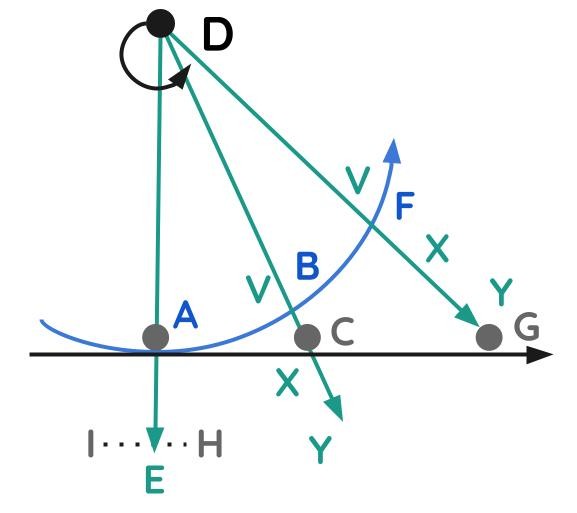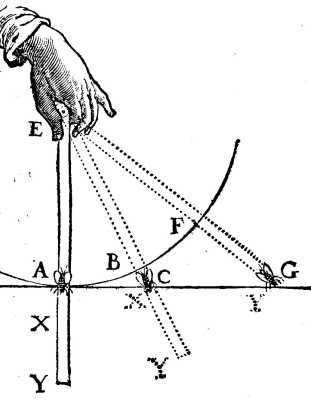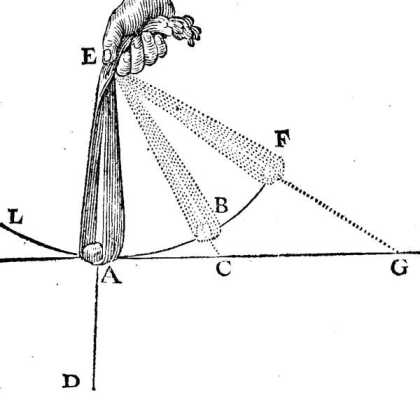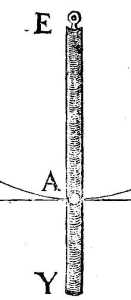Light and the Movement of Spacetime Particles
Table of Contents
55. What is light?
All bodies that are moved in a circle tend to move away from the center as much as they can.
Both the air-aether globules and the fire-aether gathered around Center S and Center F try to move away from those centers.
Light consists solely in this force.
56. Understanding the effort towards motion in inanimate objects
The air-aether globules strive to move away from the centers that they rotate around.
This does not mean that they move by themselves.
Instead, they are moved in a certain way [by the collective motion of all globules] if if not hindered by any other cause.
57. How different efforts towards motion can coexist in the same body
Frequently, many different causes act simultaneously on the same body. Some impede the effects of others.
Therefore, the body tends, or tries to go, in different directions at the same time.
For example, Stone A in the Sling DA, rotated around Center D, tends from A towards B if all causes determining its motion are considered together.

But if we consider only the force of motion within it, we say that when it is at A, it tends towards C, according to the law of motion stated above by considering the line AC to be straight and tangent to the circle at point A.
If the stone were to leave the sling when it reaches A coming from L, it would proceed from A towards C, not towards B.
The sling prevents this, but it does not prevent the effort [which is from the hand or vortex].
Finally, if we cancel the circular motion and only consider the force that is resisted by the sling, then the stone, while at A, tends only towards E by moving away from the Center D along the straight line DAE.
58. How bodies moving in a circle try to move away from the center of their motion.
Let us compare the motion of:
- a stone at point
Agoing towardsC, if it were not impeded by any other force - an ant at the same point
Aalso moving towards C if the lineEYwere a stick.
Superphyics Note: The fire-aether moves instantly and explosively like the rock on the sling. This leads to one explosive motion:
- This explosive motion is the release of the rock from the sling on straight lines from the edge of the vortex which is the surface of a star.

The ant would walk straight from A towards Y while the stick turned around the center E.
- Point
Aof the stick would draw circleABF - The 2 motions would be simultaneous.
In this way, the ant would:
- arrive at
Xwhen the stick were atC - arrive at
Ywhen the stick were atG.
Thus, the ant would always be in the straight line ACG.
The stone tied to the sling would be like the ant that is glued to the rod. If it were released instantly,

59. The magnitude of this effort
The ant’s motion will be very slow initially. Therefore its effort, if considered only at the start of the motion, might not seem significant.
However, it is not entirely absent.
As it takes effect, it increases so that the resulting motion can become quite fast.
Let EY be a tube containing a ball A.

When the tube starts to rotate around Center E, the ball will immediately progress very slowly towards Y.
But in the next moment, it will move a little faster, retaining its previous force and acquiring a new one from its new effort to move away from the Center E.
As long as the circular motion continues, this effort persists and is renewed each moment.
If the channel EY is rotated very quickly around the Center E, the ball will soon move from A to Y.
We also observe this in a sling.
The faster the stone rotates within it, the more the cord tightens.
This tension arises solely from the stone’s force in trying to move away from the center of its motion.